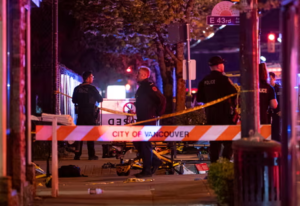The Shadow in the Seat of Power: Examining the Canada Parliament Lockdown of April 6, 2025
A Moment of Disruption: Lockdown in the Heart of Democracy
The news that the Canadian Parliament in Ottawa was placed under lockdown on April 6, 2025, sent ripples of concern and speculation across the nation and beyond. The image of the very heart of Canadian democracy, a symbol of open discourse and governance, being suddenly sealed off due to an unauthorized individual barricading themselves inside, is a stark reminder of the vulnerabilities inherent in even the most secure institutions. While the immediate situation was thankfully resolved with an arrest, the incident serves as a potent catalyst for reflection on security protocols, the accessibility of democratic spaces, and the underlying anxieties that can lead to such disruptions.

Swift Response and Resolution: Prioritizing Safety and Security
The abrupt imposition of a lockdown on Parliament Hill would have undoubtedly triggered a cascade of immediate actions. Security personnel would have been mobilized, communication channels activated, and elected officials and staff would have been placed on high alert. The primary focus would have been on ensuring the safety of all individuals within the parliamentary precinct and understanding the motivations and potential threat posed by the unauthorized individual. The duration of the lockdown, spanning several hours, suggests a cautious and methodical approach by security forces to contain the situation and bring it to a peaceful resolution. The eventual arrest signifies a successful intervention, preventing potential harm and allowing the machinery of government to resume its functions.
Questions of Security: Reassessing Protocols and Access
However, the resolution of the immediate crisis does not diminish the significance of the event itself. The fact that an individual was able to breach security measures to the extent of barricading themselves inside Parliament raises pertinent questions about the robustness of existing protocols. A thorough review of security procedures, access controls, and response mechanisms will likely be undertaken to identify any weaknesses and implement necessary enhancements. This incident underscores the ongoing challenge of balancing the need for security with the principle of open access to democratic institutions, a delicate equilibrium that requires constant vigilance and adaptation to evolving threats.
Unraveling Motives: Seeking Understanding Beyond the Act
Furthermore, the motivations behind the individual’s actions will undoubtedly be a subject of scrutiny and speculation. Was this a politically motivated act, a personal crisis playing out in a highly symbolic location, or something else entirely? Understanding the underlying reasons is crucial for comprehending the broader implications of the event. It could potentially reflect a deeper sense of disenfranchisement, a protest against specific policies, or even highlight the need for greater mental health support systems within the community. Without further information, drawing definitive conclusions remains speculative, but the incident nonetheless serves as a reminder of the diverse pressures and frustrations that can manifest in unexpected ways.
Impact on Governance: A Temporary Disruption to Democratic Processes
The lockdown would have also had a tangible impact on the day-to-day operations of the Canadian government. Parliamentary sessions would have been suspended, committee meetings postponed, and the ability of elected officials to engage in their legislative duties would have been curtailed. While a temporary disruption, such an event can highlight the fragility of democratic processes and the potential for even isolated incidents to impede the functioning of government. The swift resolution was therefore crucial in minimizing long-term disruption and restoring a sense of normalcy.
A Call for Vigilance: Safeguarding Democratic Spaces
In conclusion, the Canada Parliament lockdown of April 6, 2025, while thankfully ending without major incident, serves as a significant moment for reflection. It compels a reassessment of security measures surrounding vital democratic institutions, prompts consideration of the underlying factors that might lead to such breaches, and underscores the potential for disruption to the core functions of government. As details emerge regarding the individual’s motivations and the findings of any subsequent security reviews, this event will likely shape future approaches to safeguarding Canada’s parliamentary precinct, ensuring both security and the continued accessibility of this important symbol of national governance. The shadow that briefly fell upon the seat of power serves as a powerful reminder of the constant need for vigilance in preserving the integrity and safety of democratic spaces.










